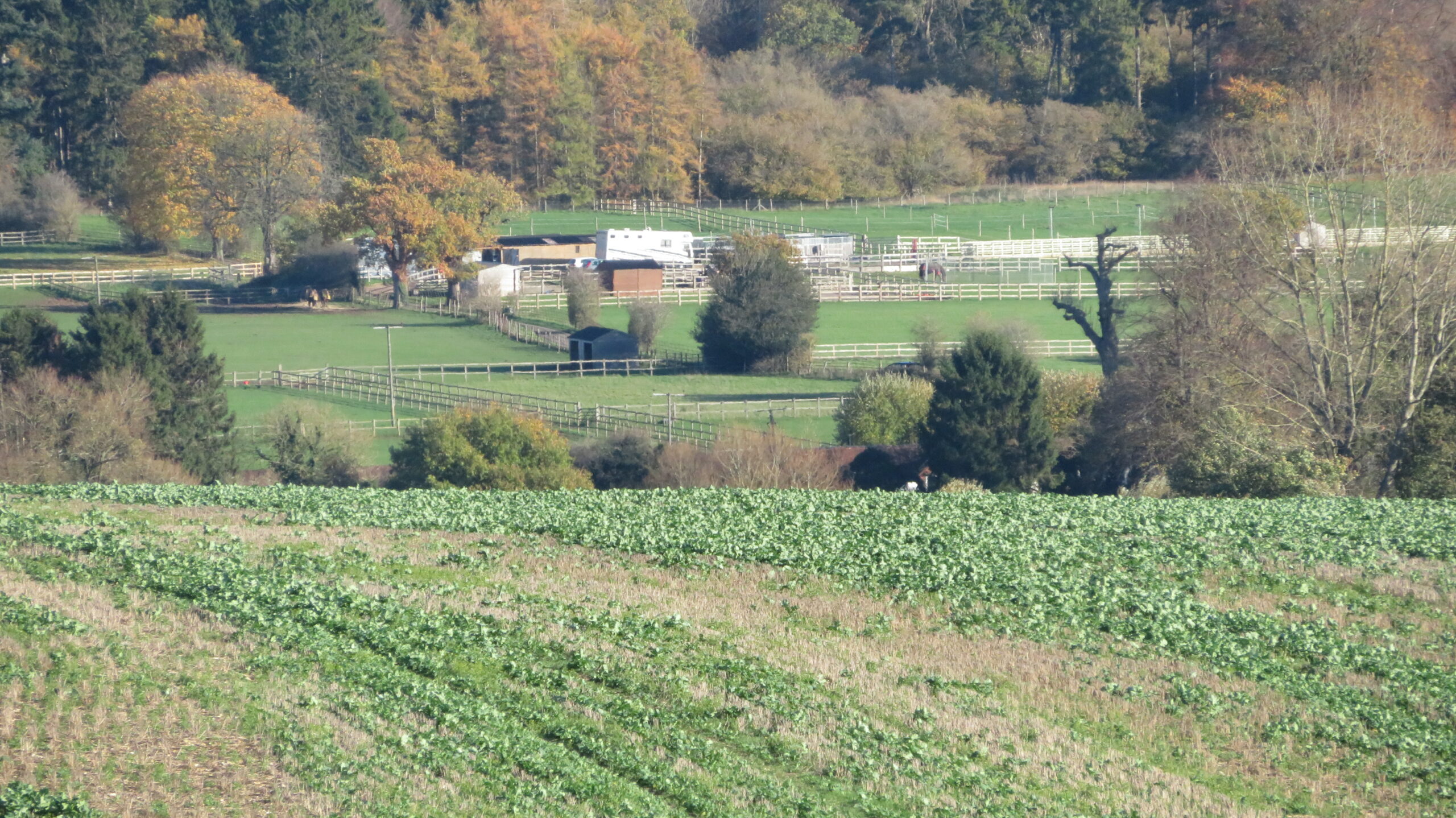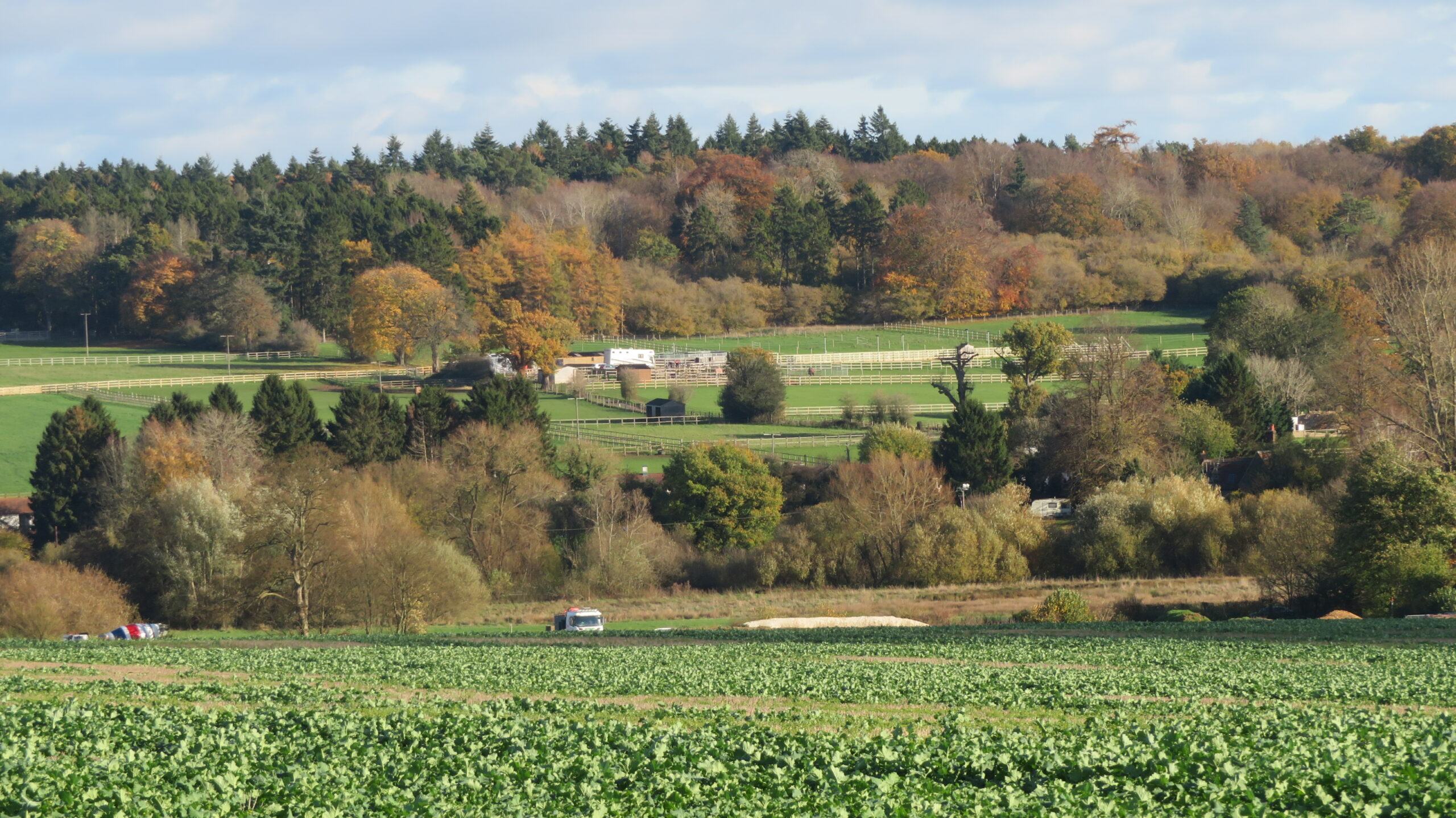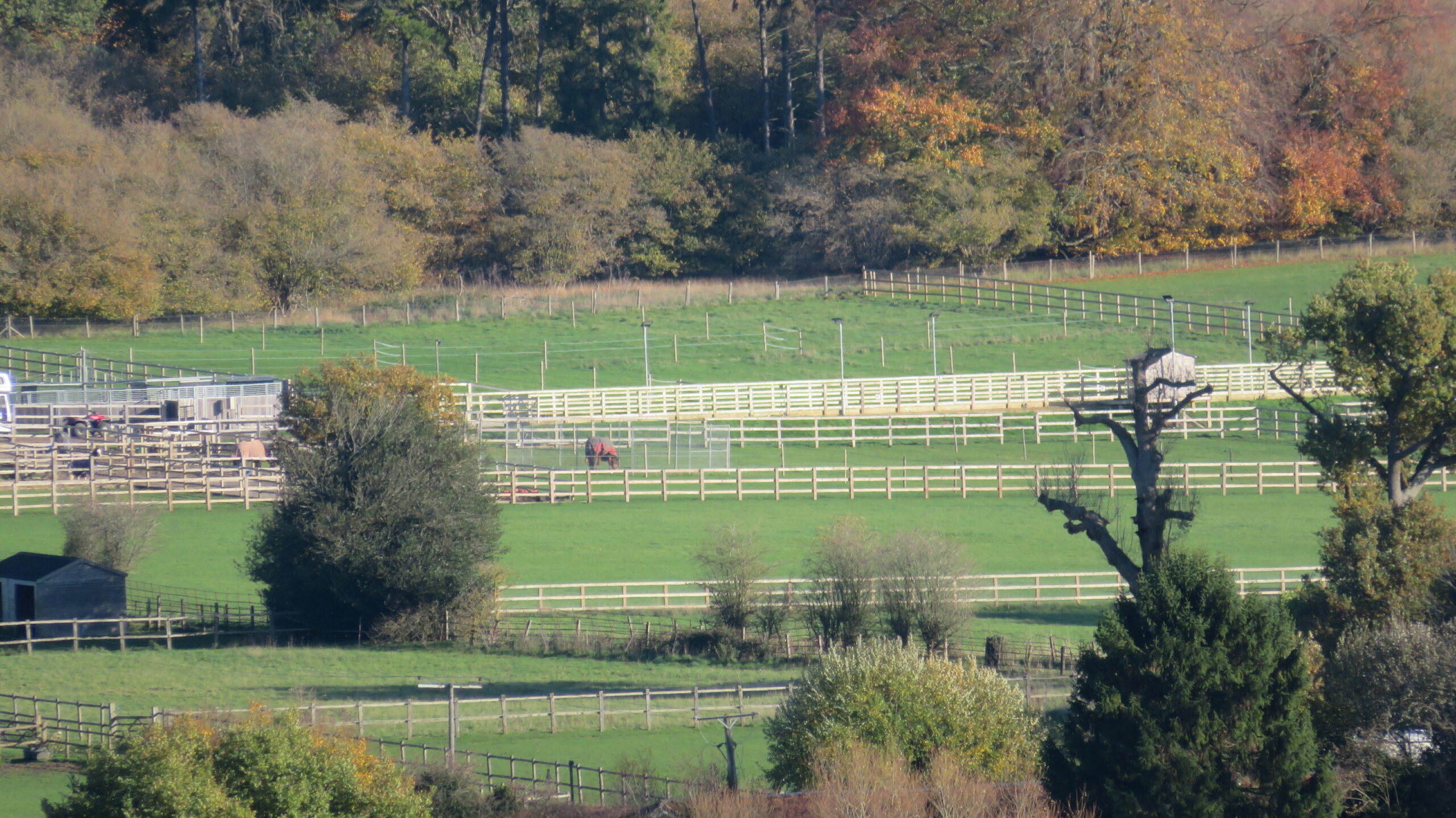Shafford Fields Floodlighting (updated)
Synopsis: In March 2021 St Albans District Council (SADC) Planning Enforcement opened a case concerning floodlighting installed at Shafford Fields, which the council considered to be unauthorised development – the site being subject to clear pre-existing conditions that prohibited the installation of external lighting and overnight parking of vehicles.
A retrospective planning application (ref 5/2022/2479) was subsequently submitted which was “called-in” to the SADC Planning (Development Management) Committee by three district councillors, concerned about the practicality and effectiveness of any retrofitted conditions.
I would ask the committee to refuse the application on the grounds it contravenes Policy 1 (green belt), Policy 80 (floodlighting) and Policy 104 (landscape conservation in Chidwickbury) of the 1994 Local Plan
Planning Committee Cllr member written comment 20/05/23
The St Albans Planning Committee considered the application on Monday 27th Nov 2023. The application was approved only after the following strict conditions were agreed to be set.
- The use of the lights hereby permitted shall be limited to Monday to Friday between the hours of 06:30 to 08:00 and 16:30 to 18:00 and shall only be operational during the late autumn/winter months of October, November, December, January, and February.
- Within one month of the date of this decision, a landscape plan shall be submitted to and approved in writing by the Local Planning Authority. The landscape plans shall include the planting of a laurel hedge around the outside of the manege fencing, It shall be of at least the existing fence height to screen the existing manege. Landscaping shall be carried out in the first planting season following approval of the details. If within five years of the date of planting any plant dies or is removed, it shall be replaced in accordance with the approved details.
- Within three months of the date of this decision; all lamps hereby approved shall be tilted horizontally; downward directors and cowling shall be installed in accordance with details that shall have been first submitted to and approved in writing by the Local Planning Authority and a timer shall be installed to limit the hours of use to those approved in condition 4. Thereafter these details shall be retained in accordance with the approved details.
Background commentary on the application:
Shafford Fields is a paddock within the historic and beautiful Childwickbury Estate. It is on a hill overlooking the Shafford Mill Conservation Area and the Ver Valley. It is on Green Belt land that the District Council identifies as a Landscape Conservation Area, and Herts County Council identifies as a Landscape Character Area (#101) called the Childwick Plateau.
From its elevated position, you can see across several miles of the Ver Valley, nearly all the way to Redbourn. The site is exposed and clearly visible from a distance at Hogg End Lane, Punch Bowl Lane, Shafford Mill, Redbournbury Mill and Gorhambury, over distances of 2km or more.
The landscape is rural and open. The valley is dark at night, shielded from the lights of the nearest towns. In 2022 (August 11th) Childwickbury was listed by the Herts Ad as one of only 3 named locations in St Albans, Welwyn Garden City and Hatfield where “clear dark skies” exist.
The site has been progressively developed over the last few years and has existing planning conditions set that prohibit the installation of external lighting and overnight parking of vehicles. Both ignored and not enforced. Unbelievably, despite these conditions, a floodlit commercial livery now operates at the site.
National Planning Policy Framework – impact on openness of the Green Belt
Because this application is retrospective we can see what the floodlight impact is at night. The uncomfortable brightness of the glare is visually intrusive from some distance. The rural character of the landscape means that it is viewed against a contrasting darker background, which worsens the glare.
Lit up, the site resembles a scene from the film Close Encounters of the Third Kind. If you see the lights, you can’t forget them. It is a massive visual distraction that draws the attention of anyone travelling in the Valley at the time. Consequently the lights diminish the openness of the landscape.
The existing conditions, exist to maintain the openness of the Green Belt. To comply with the St. Albans District Local Plan and the National Planning Policy Framework.
An overriding principle of the National Planning Policy Framework is to prevent inappropriate development on the Green Belt. When floodlit, the landscape suffers from the encroachment of urbanisation, it no longer feels like a protected landscape or conservation area. The lighting impacts on the significance of the conservation area status itself. Its openness is diminished.
The Council’s own policy for this landscape area states that it will “not grant permission for any development that would adversely affect the high landscape quality.”
The impact of the damage cannot be managed by conditions, because the lights are already in situ. Time-limits, retro-fitting of cowling or adjusting the angle of lights will still result in lighting that is discordant with conservation area status. It wont “limit the damage”, the glare will still exist – reflected from the ground, the fencing and several large mirrors that surround the manege.
Achieving the desired effect of proposed new conditions will be unenforceable too. There is no proposed plan to re-evaluate after the changes to see if they have worked. There is not even a plan for effective screening. Setting the unacceptable precedent of retrospective approval for floodlights, with conditions, will be like writing a blank cheque to enable future similar destruction. Places like Childwickbury, Nomansland, and Gorhambury all become at risk.
No Legal Basis
Most importantly the application fails the tests set by the National Planning Policy Framework 2021. The relevant points are as follows:
- That outdoor sport and recreation can be appropriate development in the green belt; where they preserve the openness and do not affect green belt purposes.
- One of the green belt purposes is to assist in safeguarding the countryside from encroachment (§139(c)) and to preserve the setting and special character of historic towns (§139(d)). It conflicts with both of these, and therefore harms openness (introducing built development on that which was formerly open).
- Harm to openness means it is inappropriate development in the green belt, which warrants ‘very special circumstances’. That is the most onerous test in planning – there has to be something really very special for planning permission to be granted here. It is not merely a balance of harms against benefits.
- Very special circumstances do not exist and therefore, permission ought not be granted.
The relevant paragraphs of the NPPF are listed below.
Impacted Area
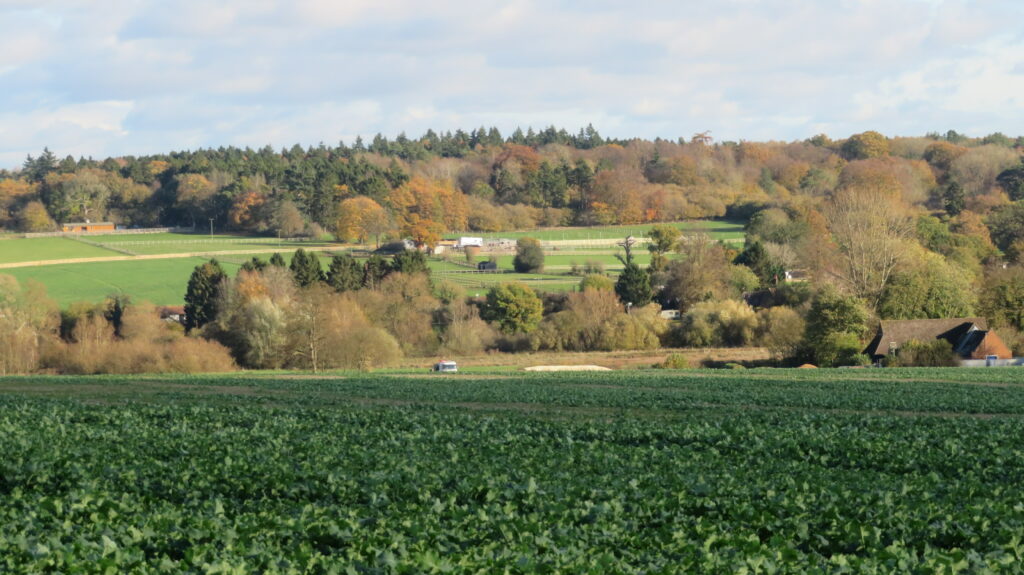

This is a completely inappropriate place to install floodlighting. It is recommended that planners and councillors visit these locations at night and request to observe the impact of the lights for themselves.
Some further points on the application:
Local Plan
The Local Plan states that “floodlighting schemes are unacceptable if they cause harm to the character of the area”. An appropriate reference point for the intended character of equestrian facilities on the Childwickbury Estate as a whole can be found in the nearby Childwickbury Stud statements on Conservation & Wildlife. The Stud promotes “minimal artificial lighting to ensure no light pollution”
Light glare and light spillage
The lighting report attempts to show that the distribution of light somehow doesn’t go beyond the site boundary. This is nonsense. The uncomfortable brightness of the glare is visually intrusive from some distance. The rural character of the landscape means that it is viewed against a contrasting darker background, in comparison to an urban area. This causes intense glare.
High powered lighting, bogus precedent.
The Frankly 100W Floodlight is marketed as a high powered/high lumen LED floodlight. The combined lighting output would be equivalent to over 4.3KW incandescent light bulbs producing 66,000 lm.
No other floodlight planning permission is on record as having been approved or even applied for in this conservation area. Indeed, such an approval would set a damaging precedent for the 60m x 20m manege at Shannon Stables opposite and others in the area to follow. If this application is approved residents right across the Valley will be doomed to endure the sight of this dark rural environment area lit up at night like Luton Airport’s runway.
Impact on nocturnal wildlife
Nocturnal wildlife is negatively affected by floodlights and the associated light spillage way beyond the site. This will disrupt the ability of the local barn owls to hunt. Bats are known to roost in the area. The negative impact of floodlighting on wildlife is well documented.
Lack of need
There is simply no need for these floodlights. Daylight hours in the UK average between 8-16 hours/day. The simple remedy to resolve the planning breach is to remove the lights and use the manege during daylight hours.
To comment
Let St Albans City & District Council know what you think by visiting https://planningapplications.stalbans.gov.uk/planning/search-applications#VIEW?RefType=PBDC&KeyNo=125140
How to comment on a planning application.
The floodlighting

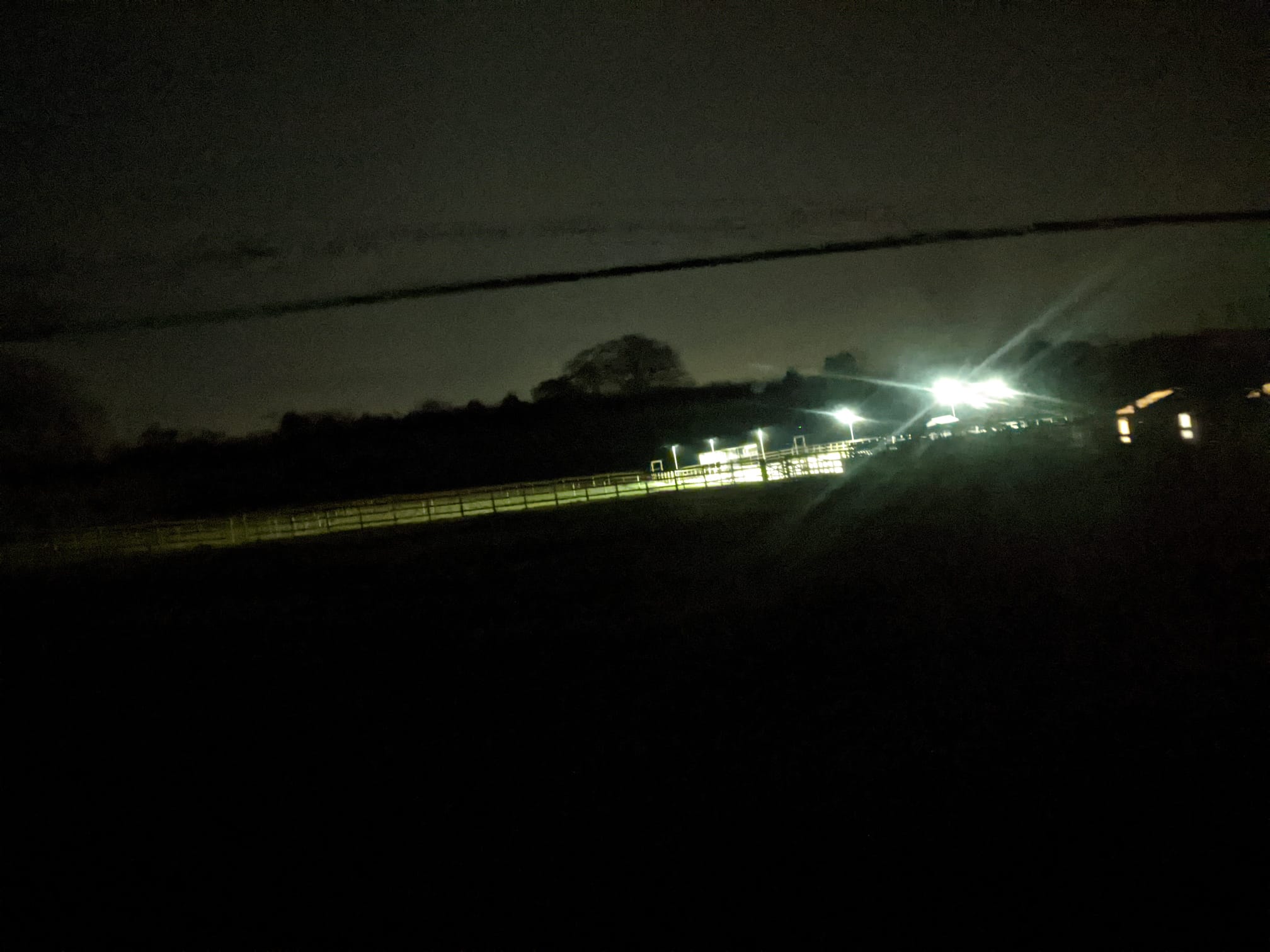




National Planning Policy Framework 2021
138. Green Belt serves five purposes: a) to check the unrestricted sprawl of large built-up areas; b) to prevent neighbouring towns merging into one another; c) to assist in safeguarding the countryside from encroachment; d) to preserve the setting and special character of historic towns; and e) to assist in urban regeneration, by encouraging the recycling of derelict and other urban land.
147. Inappropriate development is, by definition, harmful to the Green Belt and should not be approved except in very special circumstances.
148. When considering any planning application, local planning authorities should ensure that substantial weight is given to any harm to the Green Belt. ‘Very special circumstances’ will not exist unless the potential harm to the Green Belt by reason of inappropriateness, and any other harm resulting from the proposal, is clearly outweighed by other considerations.
149. A local planning authority should regard the construction of new buildings as inappropriate in the Green Belt. Exceptions to this are: a) buildings for agriculture and forestry; b) the provision of appropriate facilities (in connection with the existing use of land or a change of use) for outdoor sport, outdoor recreation, cemeteries and burial grounds and allotments; as long as the facilities preserve the openness of the Green Belt and do not conflict with the purposes of including land within it; c) the extension or alteration of a building provided that it does not result in disproportionate additions over and above the size of the original building; d) the replacement of a building, provided the new building is in the same use and not materially larger than the one it replaces; e) limited infilling in villages; f) limited affordable housing for local community needs under policies set out in the development plan (including policies for rural exception sites); and
Visibility from around the Ver Valley


